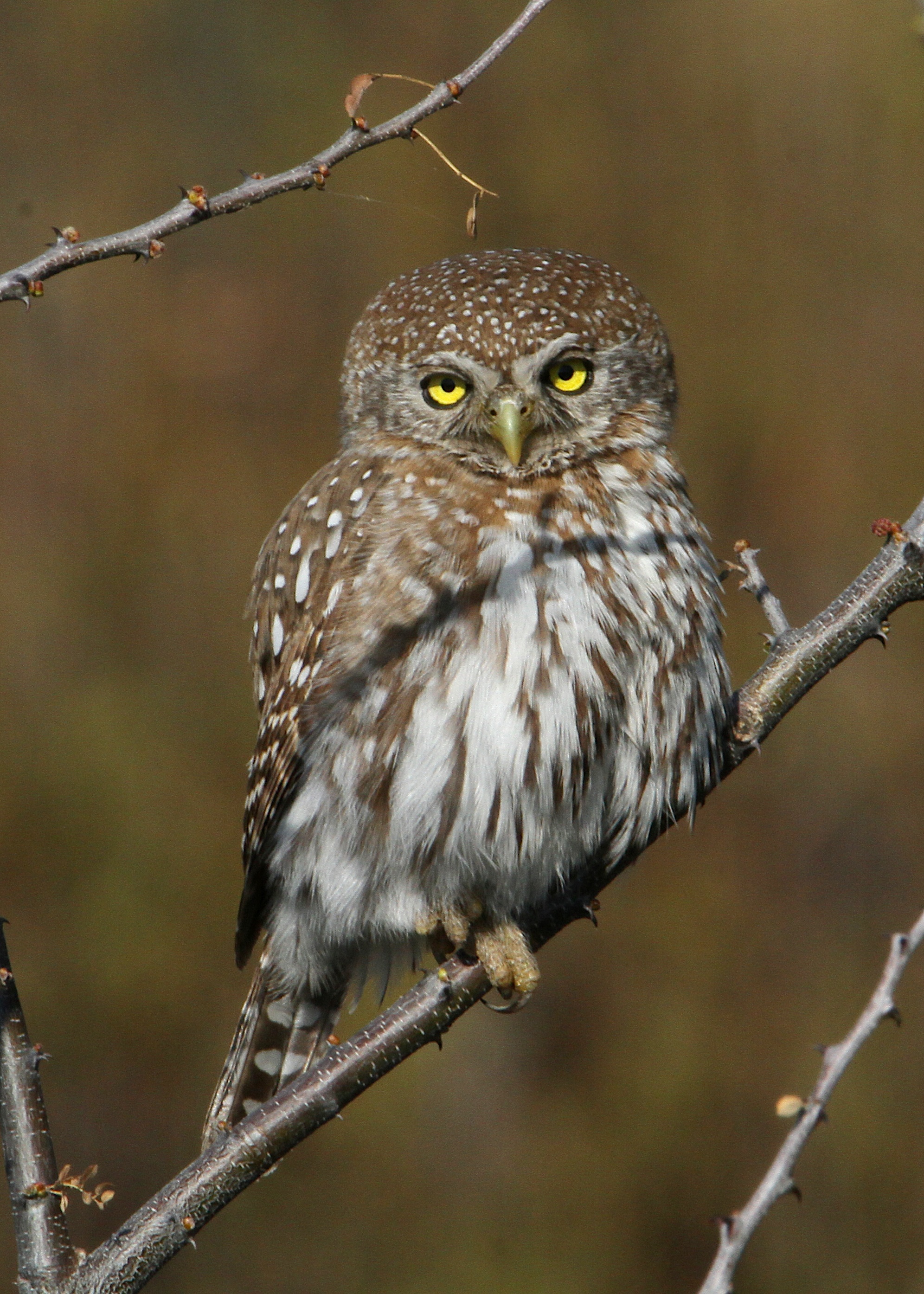
Glaucidium perlatum
SUBFAMILY
Surninae, Tribe Surniini
TAXONOMY
Strix perlatum Vieillot, 1817, Senegal. Two subspecies are recognized.
OTHER COMMON NAMES
English: Pearl-spotted owl; French: Chevкchette perlйe; German:
Perlkauz; Spanish: Mochelo Perlado.
PHYSICAL CHARACTERISTICS
6.7–7.9 in (17–20 cm). Female, 2.2–5.2 oz (61–147 g). Male,
1.3–3 oz (36–86 g). A small owl with a cinnamon head, whitish
facial disc, white eyebrows, and yellow eyes. Upperparts are
cinnamon with white spots; flight feathers are dark brown with
reddish bars. Underparts are white with broad brown streaks.
The longish tail is brown with incomplete white bars.
DISTRIBUTION
Gambia to Sudan, Ethiopia, Uganda to north and east South
Africa, Angola, and Namibia.
HABITAT
Bushveld, open and dense woodlands, and grasslands.
BEHAVIOR
Sedentary. Territorial throughout the year. An energetic
hunter that takes prey considerably larger than itself at times.
Hunts chiefly at night, but is the most diurnal African owl, especially
in winter. False white “eye” patches on backs of wings
may act as a deterrent to predators.
FEEDING ECOLOGY AND DIET
Many insects, arthropods, small mammals, birds (up to the size
of doves), lizards, and bats. Hunts from perch and will chase
birds in flight.
REPRODUCTIVE BIOLOGY
Cavity nester, especially using old nests of barbets or woodpeckers.
Normally lays three eggs. Incubation is about 29 days.
Usually rears one or two young. Young fledge in about 31
days.
CONSERVATION STATUS
Not globally threatened. Widespread and locally common.
SIGNIFICANCE TO HUMANS
None known.
Photo Gallery of - Pearl-spotted owlet




 Animalia Life
Animalia Life